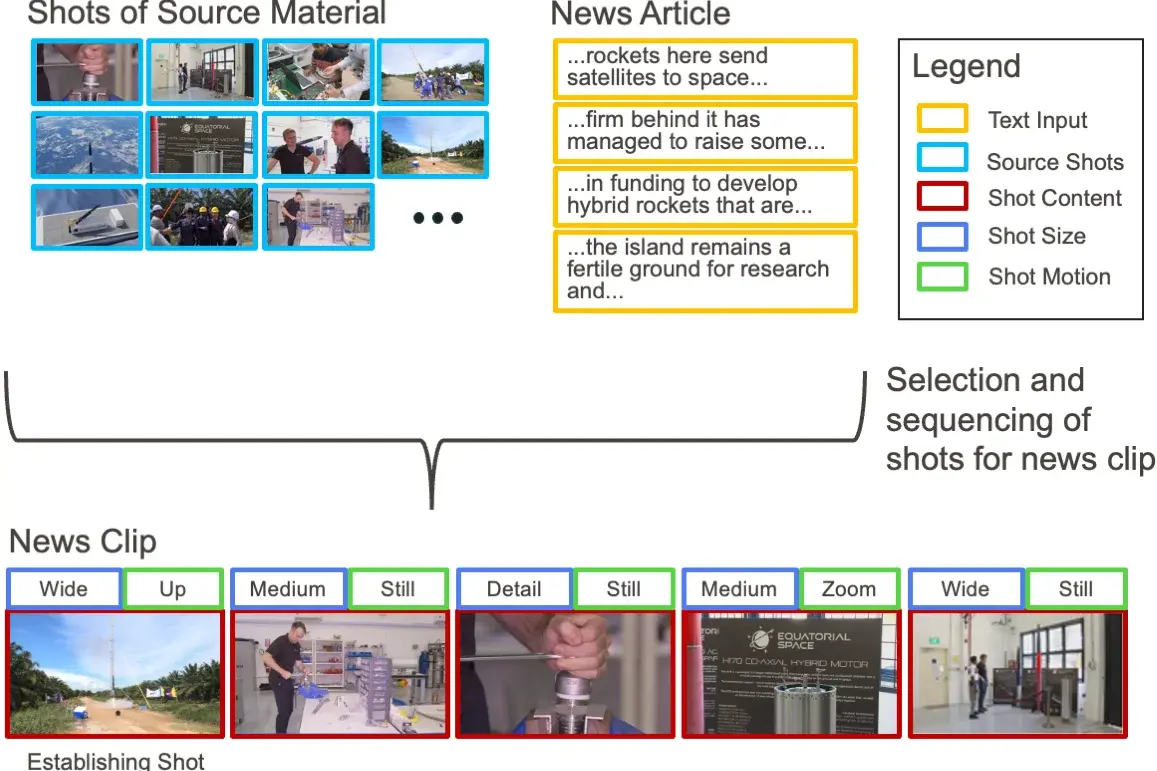Research Project KIGVI
| Project name: | KIGVI - Automatic AI-supported composition of video news clips |
| Department: | Engineering - Media Technology |
| Project head: | Prof. Dr.-Ing. Matthias Narroschke |
Project staff:
|
|
| Project partner: | Qvest GmbH, Köln |
| Duration: | May 1, 2021 - October 31, 2026 |
| Funding institution or client: | Funded BMFTR project (FH-Kooperativ funding code 13FH544KX9) |
The aim of the project is to develop an innovative solution for AI-based reportage creation that extracts suitable sections from video sequences and compiles them into a broadcast-ready report. On social networks and news portals, short video reports are increasingly replacing conventional text reports in order to attract users' attention. For video content providers, the cost-effective and efficient production of short video reports is therefore particularly important. Until now, video reports have been created manually, which is time-consuming and costly.
The project therefore aims to develop a system that can automatically evaluate quality and compose a report suitable for broadcast. The development can be divided into two core topics. On the one hand, an AI model that extracts suitable video segments from existing video sequences and, on the other hand, another model that generates the video report from the extracted segments. To this end, suitable parameters describing relevant quality characteristics are to be automatically estimated for the extracted video segments.
In addition to purely technical characteristics such as image resolution and conformity to video standards, content-related and stylistic characteristics are also to be defined and corresponding parameters estimated. These include, for example, categorizing the segments into “background material,” “recording,” “interview,” or “original sound sequence,” or adhering to the “golden ratio” in the image. Based on the estimated parameters, the corresponding video sections are to be composed into a broadcast-ready report using the second AI model. In particular, genre-dependent pattern sequences for reports, which are usually different, such as for sports news, product presentations, or political reports, are to be taken into account.

Overview of the selection and sequencing process for a news clip. Shots are selected from source material based on the segments of the news article, their shot content, shot size and shot motion. They are then sequenced according to video editing principles for news clips.
Publications & Presentations
- D. Quandt, P. Altmeyer, W. Ruppel, and M. Narroschke,
"Automatic Text-based Clip Composition for Video News",
Proceedings of 9th International Conference on Multimedia and Image Processing (ICMIP), Osaka, Japan, April 2024, https://doi.org/10.1145/3665026.3665042 - C. Moosburner, D. Quandt, M. Kowald, W. Ruppel, T. Dannewald, and M. Narroschke,
“Evaluating AI Editing Algorithms for Video News Reporting”,
AIMEDIA 2025, The First International Conference on AI-based Media Innovation, Venice, Italy, 2025, https://www.thinkmind.org/library/AIMEDIA/AIMEDIA_2025/aimedia_2025_1_90_40054.html - D. Quandt, W. Ruppel and M. Narroschke, "News Clip Composition with Mixture-of-Experts," 2025 IEEE 8th International Conference on Multimedia Information Processing and Retrieval (MIPR), San Jose, CA, USA, 2025, pp. 250-256, doi: 10.1109/MIPR67560.2025.00047
- D. Quandt, P. Altmeyer, W. Ruppel, and M. Narroschke,
"KI-gestützter Videoschnitt für Nachrichtenclips",
FKTG Journal, 3-2024 - D. Quandt,
"AI-supported video editing framework for news clips",
9th VDE/ITG Graduate Summer School on Video Compression and Processing (SVCP) 2024, Ruedesheim, Germany - D. Quandt,
"Automated AI-based video composition of video News Clips",
EBU Production Technology Seminar 2025, Geneva, Switzerland